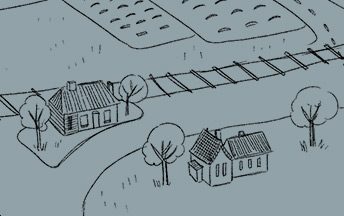Our little village has a big story
The History of Ross

Governor Macquarie, inspired by the findings of First Government Surveyor Charles Grimes, who surveyed and traced sections of the river in 1807, visited Tasmania in 1811 and named the area Argyle Plains and the river Macquarie.
In 1812 a garrison of soldiers was stationed at the ford of the Macquarie River to protect the development of the future town. Buildings were soon established and in 1821 the settlement was proclaimed the town of Ross by Governor Macquarie. Ross was the name of the parliamentary seat of his friend H M Buchanan of Loch Lomond, Scotland.
Ross was considered ideally situated being centrally located and easily accessible from both North and South. The good flat country was ideal for farming and and the river provided a reliable water supply. In those early years of the colony, the government established a large farm in the district of over 20,000 acres for agriculture and breeding of draft oxen. It was broken up in 1830 and sold off to private landholders.
The Macquarie River was originally crossed by a ford at Ross. In 1821 a low level bridge was built consisting of logs laid on some stone buttresses and covered with earth and gravel. In 1836 this was replaced by the splendid sandstone bridge which is still one of the historic features of Ross today.
The military presence remained an important part of Ross for many of its early years and its influence can still be seen today. A number of the early buildings around the town have military origins and several streets are named after battles of the Napoleonic wars. Some of the military stationed here in those early days were veterans of these campaigns.
As Ross developed it became important not only as a garrison town but also as a coach horse change and livestock market. In 1826 it became the venue for the first agricultural show in the midlands. These beginnings are evident in the coaching inns and the fine properties in the surrounding district.
The Museum at the Tasmanian Wool Centre tells many stories of the early days of the colony and the wool growing families of the district.